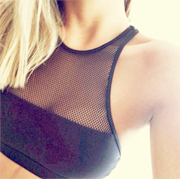Less Commonly Known Eating Disorders
 time: 19:18:31
time: 19:18:31 - An individual dealing with Orthorexia fixates on defining the "right" foods, foods that can be safely eaten.
- They will spend just as much time and energy thinking about food as someone with Bulimia or Anorexia. They may not think about calories, but they think about the overall "health benefits" and how the food was processed, prepared, etc. Individuals with Orthorexia tend not to eat out as much because they do not trust the preparation of foods other than what they have prepared.
- The obsession for healthy foods could come from a number of sources such as family habits, society trends, economic problems, recent illness, or even just hearing something negative about a food type or group, which then leads them to ultimately eliminate the food or foods from their diet.
- Something to keep in mind: The severe restrictive nature of Orthorexia has the potential to morph into Anorexia.
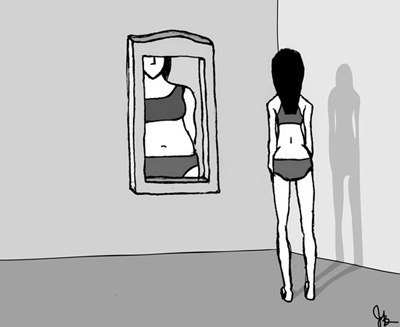
- Typically those that have Bigorexia are not frail or underdeveloped at all. They actually have large muscle mass and will obsess about having the perfect physique. They will believe their muscles are inadequate. Bigorexia has also been known as muscle dysmorphia, Reverse Anorexia, or Adonis Complex.
- This disorder is a form of Body Dysmorphic Disorder and is related to Obsessive-Compulsive Disorder. Those with Bigorexia constantly obsess over their imperfections, further distorting their perception of themselves. This will significantly impair the person’s mood often causing depression or feelings of disgust.
- Both men and women can be affected by this disorder, although men are most susceptible.
- Unlike binge eating, which is done in relatively short episodes, NES involves continual eating throughout the evening.
There are of course more than just these… but they are a few of the less commonly known eating disorders. Anorexia and Bulimia are not the only eating disorders out there.
For more information on these and other eating disorders, go to Alliance for Eating Disorders and search the LEFT column for different types.
fitnessismyway.blogg.se/personal
 time: 01:29:40
time: 01:29:40 Tuna Salad Lettuce Wraps
 time: 09:55:00
time: 09:55:00 
 285-340 g (10-12 oz) good quality canned tuna
285-340 g (10-12 oz) good quality canned tuna ½ dl (1/4 cup) mayo or light mayo
½ dl (1/4 cup) mayo or light mayo 1 tsp Dijon mustard
1 tsp Dijon mustard 1 tbsp lemon juice
1 tbsp lemon juice 1/4 tsp celery seed
1/4 tsp celery seed 1/4 tsp salt
1/4 tsp salt 1 dl (½ cup) finely chopped celery
1 dl (½ cup) finely chopped celery 1 tbsp capers, chopped
1 tbsp capers, chopped 2 green onions, thinly sliced
2 green onions, thinly sliced 8 large lettuce leaves, washed and dried (romaine, iceberg or butter lettuce will work for this)
8 large lettuce leaves, washed and dried (romaine, iceberg or butter lettuce will work for this) 1 dl (½ cup) chopped cherry tomatoes (optional)
1 dl (½ cup) chopped cherry tomatoes (optional)My tips on fitting exercise into your busy schedule
 time: 09:15:37
time: 09:15:37 
Chocolate Almond Butter
 time: 17:34:10
time: 17:34:10 
 1 dl (½ cup) semisweet or dark chocolate chips
1 dl (½ cup) semisweet or dark chocolate chips 6 dl (2 ½ cups) whole roasted salted almonds
6 dl (2 ½ cups) whole roasted salted almonds 1 tbsp melted virgin coconut oil (optional)
1 tbsp melted virgin coconut oil (optional)Nutrition Scares
 time: 20:56:25
time: 20:56:25 
How to help a friend with an eating disorder
 time: 18:35:18
time: 18:35:18 - Focus on feelings and relationships, not on weight and food. Share your memories of specific times when you felt concerned about the person’s eating behavior. Explain that you think these things may indicate that there could be a problem that needs professional help.
- Tell them you are concerned about their health, but respect their privacy. Eating disorders are often a cry for help, and the individual will appreciate knowing that you are concerned.
- Do not comment on how they look. The person is already too aware of their body. Even if you are trying to compliment them, comments about weight or appearance only reinforce their obsession with body image and weight.
- Make sure you do not convey any fat prejudice, or reinforce their desire to be thin. If they say they feel fat or want to lose weight, don’t say “You’re not fat.” Instead, suggest they explore their fears about being fat, and what they think they can achieve by being thin.
- Avoid power struggles about eating. Do not demand that they change. Do not criticize their eating habits. People with eating disorders are trying to be in control. They don’t feel in control of their life. Trying to trick or force them to eat can make things worse.
- Avoid placing shame, blame, or guilt on the person regarding their actions or attitudes. Do not use accusatory “you” statements like, “You just need to eat.” Or, “You are acting irresponsibly.” Instead, use “I” statements. For example: “I’m concerned about you because you refuse to eat breakfast or lunch.” Or, “It makes me afraid to hear you vomiting.”
- Avoid giving simple solutions. For example, “If you’d just stop, then everything would be fine!”
How to squat with proper technique
 time: 14:18:00
time: 14:18:00 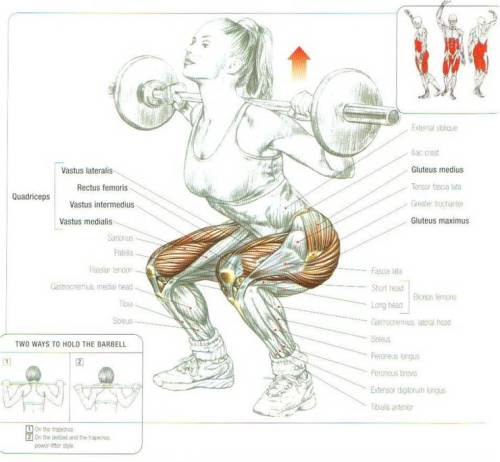
- Squats Build Muscle – Squats build muscle throughout your entire body faster than any other exercise. Squatting is a compound exercise that stresses your entire body as a complete unit. The stress put on your body by squats triggers a hormonal release of testosterone in your body. This elevated testosterone aids in producing muscle at a faster rate.
- Squats improve your athleticism – If you want to become a better athlete no other exercise will improve your overall athleticism like the squat. Squatting helps you build explosive strength that carries over to most competitive sports.
- Squats reduces injuries – Contrary to popular belief, squats do not cause injury (when performed correctly). Performing squats with proper form actually reduces the chance of injuring oneself. Why? Because squatting improves and maintains hip flexibility. Additionally, squats improve the stability of your knees, when using proper squat form.

- It is dangerous – While squatting with proper form is completely safe, squatting with poor form is extremely dangerous. Incorrect squat technique put a lot of stain on the lower back and knees and can quickly lead to serious injury.
- You are seriously compromising the benefits of squatting - When you don’t squat with proper form it completely defeats the purpose of squatting in the first place. Increased muscle, elevated testosterone, improved vertical leap – forget about it.
- You look like a complete idiot - To someone who knows how to squat properly there is nothing more pathetic than someone loading the bar up with a ton of weight than not squatting with proper form. Learn how to control your ego and do it right.
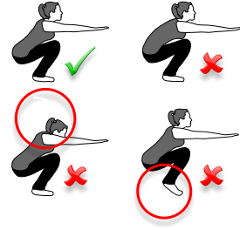
- Approach the rack with the bar at approximately mid-chest height.
- Move under the bar and place it on your back. Hold the bar in place with your hands.
- Stand with and even stance. Your feet should be shoulder width apart with your feet facing out at a 30 degree angle.
- Lift the bar out of the rack and take ONLY one step back. Take a big breath. Tense your entire body. Squat.
- Start from the hips – Bend at your hips and sit back into the squat. Imagine you are sitting down on a seat. The hips joint should always bend before your knees.
- Check your knees – Keep your knees out. Your knee joints should be pointing in the same direction as your feet all the way down. If your knee buckle in it normally means that the weight is too heavy.
- Keep your weight back – Keep your weight distributed towards your heel.
- Go all the way down – You should always aim to squat to at least parallel. Meaning, your hip joint needs to be at least parallel with your knee joint. This is incredibly difficult to judge yourself, even with the aid of a mirror. Ask someone else to assess your depth either in the gym or by video taping.
- Think about squatting up - On the way down think about squatting up. This will help to prepare your brain and make the upward movement easier.
- Bounce off the bottom – At the bottom position of the squat your hip muscles should be tight – storing energy. Use this energy to help you bounce out of the bottom of the squat. Ensure that you are bouncing off the hips – not the knees.
- Focus on your glutes – When powering up out of the squat concentrate on squeezing your glutes together.
- Drive your hips up – Most of the power for the squat comes from the hips. Drive the hips in an upward motion.
- Step forward. Ensure that your bar is over the pins before lowering the weight.
Shoe business
 time: 22:52:12
time: 22:52:12 
Normal pronation: The outside part of the heel makes initial contact with the ground. The foot “rolls” inward about fifteen percent, comes in complete contact with the ground, and can support your body weight without any problem. The rolling in of the foot optimally distributes the forces of impact. This movement is called “pronation,” and it’s critical to proper shock absorption. At the end of the gait cycle, you push off evenly from the front of the foot.

A - Normal (medium) arch: If you see about half of your arch, you have the most common foot type and are considered a normal pronator. Contrary to popular belief, pronation is a good thing. When the arch collapses inward, this “pronation” absorbs shock. As a normal pronator, you can wear just about any shoe, but may be best suited to a stability shoe that provides moderate arch support (or medial stability). Lightweight runners with normal arches may prefer neutral-cushioned shoes without any added support, or even a performance-training shoe that offers some support but less heft, for a faster feel.


- How long have you been running?
- How much mileage are you doing?
- Where do you do most of your running?
- How much do you weigh?
- Are you aware of any foot problems, such as flat feet or over-/underpronation?
- Wear the socks that you plan on wearing while running. If you don’t have any, buy some moisture wicking socks beforehand.
- Your feet will expand while running, so opt for 1/2 to 1 size up from your normal, everyday shoes. You should aim to have at least 1 thumb width between your toes and the tip of the shoe. The key is to have the shoes fit not too snug, but also not too loose as to where your feet are sliding around.
- Both of your feet should be measure because a lot of people, including myself, have one foot that is slightly larger than the other. You should be fitted for the larger foot.
I just wanna tell the world that you're mine
 time: 20:54:02
time: 20:54:02 - My last class was cancelled.
- My plans for the weekend are all set!


Oh how I wish that was me
 time: 00:15:36
time: 00:15:36 
Find your greatness
 time: 21:46:45
time: 21:46:45 GOODBYE HARRY. NO.
 time: 21:40:18
time: 21:40:18 
Salmon with Tomato-Olive Salad
 time: 20:40:00
time: 20:40:00 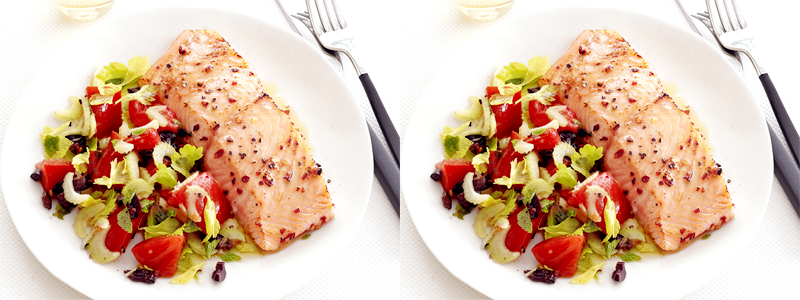
 5 tbsp extra-virgin olive oil, plus more for brushing
5 tbsp extra-virgin olive oil, plus more for brushing 1 tbsp plus 1 tsp red wine vinegar
1 tbsp plus 1 tsp red wine vinegar 1 tbsp honey
1 tbsp honey 1/4 tsp red pepper flakes
1/4 tsp red pepper flakes salt
salt 4 pieces of 170g salmon fillets (about 3 cm [1 1/4 inches] thick)
4 pieces of 170g salmon fillets (about 3 cm [1 1/4 inches] thick) 1 clove garlic, coarsley chopped
1 clove garlic, coarsley chopped 1 dl (½ cup) coarsley chopped pitted kalamata olives
1 dl (½ cup) coarsley chopped pitted kalamata olives 2 medium beefsteak tomatoes, cut into 2½ cm (1 inch) chunks
2 medium beefsteak tomatoes, cut into 2½ cm (1 inch) chunks 2 dl (1 cup) sliced celery (inner stalks with leaves)
2 dl (1 cup) sliced celery (inner stalks with leaves) ½ dl (1/4 cup) roughly chopped fresh mint
½ dl (1/4 cup) roughly chopped fresh mintPreheat the broiler. Line a broiler pan with foil and lightly brush with olive oil. Whisk 2 tbsp olive oil, 1 tsp vinegar, the honey, red pepper flakes and 1 tsp salt in a small bowl. Put the salmon, skin-side down, on the prepared pan and brush the tops and sides with the honey glaze. Broil until golden brown and just cooked through, 4 to 6 minutes. Meanwhile, put the garlic on a cutting board and sprinkle with a generous pinch of salt, then mash into a paste with the flat side of a large knife. Heat the remaining 3 tbsp olive oil and 1 tbsp vinegar, the olives and garlic paste in a small saucepan over medium-high heat until bubbling, about 3 minutes. Transfer the mixture to a bowl and add the tomatoes, celery and mint. Season with salt and toss to combine. Serve with the salmon.
Recipe from this blog.
Per serving:
- Calories: 433
- Fat: 26 g
- Cholesterol: 97 mg
- Sodium: 982 mg
- Carbohydrates: 10 g
- Fiber: 1 g
- Protein: 38 g
I'll be drunk again, to feel a little love
 time: 18:21:00
time: 18:21:00 - to get my homework done
- to exercise
- to take a shower
- to clean up in my room BECAUSE IT'S SUCH A MESS ugh
- to try to answer more of you're questions
- to eat dinner
- to look through some blogs

4 questions to ask yourself before you begin eating
 time: 17:47:16
time: 17:47:16 

Rant #1.1
 time: 22:16:00
time: 22:16:00 

Rant #1
 time: 22:07:00
time: 22:07:00 

OH WOW I'M NOT GUNNA WRITE DOWN MORE QUESTIONS NOW I'LL JUST LEAVE IT HERE. I hope you get where I'm trying to take you though. JUST ASK ME! It will be fun. All wierd and completely asshole questions will be answered too. Just. Ask. Me. Anything. Stupid or not. I have a feeling that I won't get any questions and I'm just gonna feel stupid for taking time and giving you this opportunity but whatever...lol.
Get Your Best Legs
 time: 19:41:02
time: 19:41:02 
- the leg/harmstring curl machine
- the leg press machine
- the leg abductor/adductor machines
- squats with a barbell and/or dumbbells
- barbell deadlifts
- lunges with dumbbells
- bulgarian split squat
- wall squats
- jump squats
- bridge/hip lifts (try them with your feet on a chair/bed)
- hip lifts on a balance ball (you'll get an almost instant burn!)
- leg lifts
- inner thigh lifts
- the fire hydrant
- sumo squats
- suicides
Introduction to the different types of yoga
 time: 17:36:21
time: 17:36:21 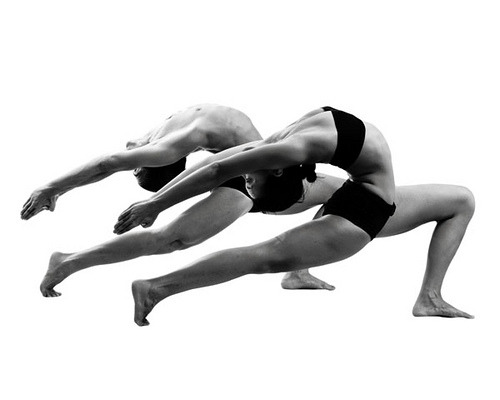
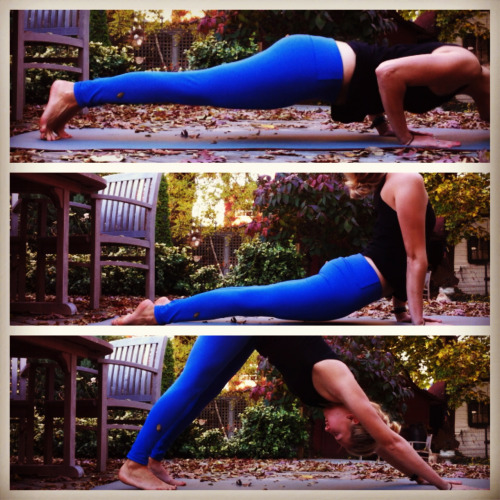
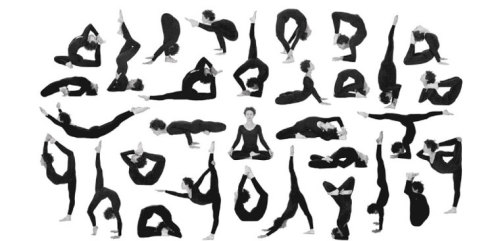
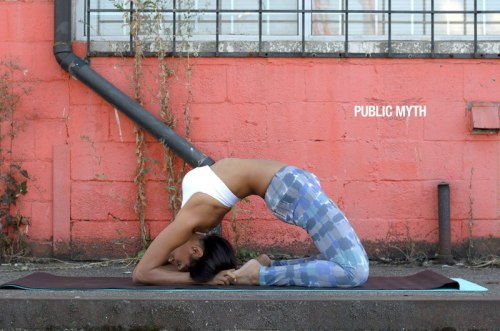
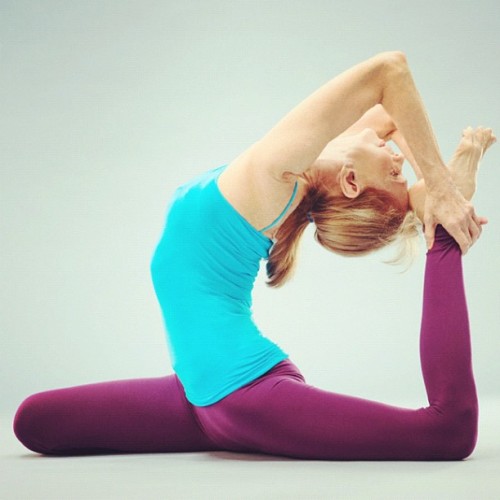
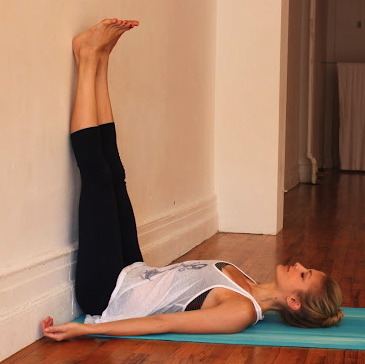
Fruit and fat loss
 time: 23:45:00
time: 23:45:00 


Steps to getting over a plateau
 time: 20:43:10
time: 20:43:10 - Keep the faith. You may feel stuck, but you're probably still losing weight - just not enough to register on the scale. (Hey - Even dropping a third of a pound per week means that in a year, you'll be down a whole 17 pounds.)
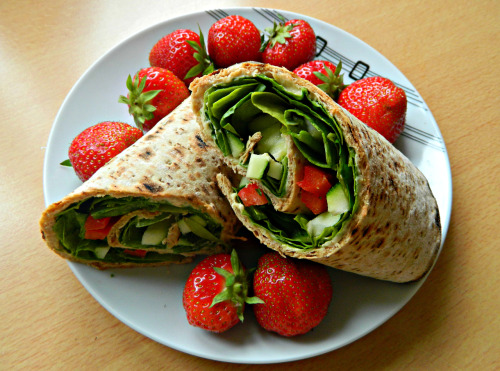
- Avoid fuzzy math. It's common to overestimate calories burned and underestimate calories eaten. Look for places where caloires may hide - dressings, spreads, sauces, croutons, and condiments. Keep a detailed food diary.
- Put up some resistance. Increasing physical activity is particularly useful for moving beyond a plateau, because exercise both uses calores and builds muscle.
- Trick your metabolism. Many fitness gurus claim that surprising your body with a change in diet, workout or both can shift you out of a weight loss rut. Change up your routine. If you are doing the same exercises over and over again, your body "knows" what to expect.

- Reboot and recharge. If your motivation is non-existent, write down all the reasons you originally wanted, and still want, to lose weight. Look at the list every day. Let friends and family know what you're up to, and ask for their support. Make a Vision Board with photos and words visualizing your successful body transformation.
15 ways to find 15 minutes for exercise every day
 time: 21:33:43
time: 21:33:43 2. Say "No!"
Women usually have a very hard time with this one. But I think you'll really like it once you try it. Next time someone (not your big boss) asks you to do something you really don't want or need to do, say, "I'm sorry. No. I just can't", and feel the freedom - and all that free time - wash over you.
3. Plan Your Day
We all have certain times of the day when we are most focused and productive. Schedule your biggest task for that time (for many people it's in the morning, say 9:00 a.m.). You'll get it done more quickly and efficiently than if you wait to tackle it during a natural low point, like mid-afternoon.
4. Do One Thing at a Time
We pride ourselves on being supreme multitaskers, but trying to do too many things at once means getting nothing done. Sit down with your to-do list. Pick an item, and do it and only it. You'll be shocked by how quickly each task gets done when you give it your full attention.
5. Record Your Shows
A typical hour-long TV-show contains just 40 to 42 minutes of real content - the rest is commercials. Watch two shows and that's almost 40 minutes you could have spent doing something else. It's well worth investing in a digital TV-recorder so you can watch just what you want when you want, and free up time to pursue more healthful activities, like 15-minute workouts.

6. Don't Be a Neatnik
Is it really all that important that your apartment is spotless? Stop wasting precious time folding your sheets just because, and polishing picture frames and aim for an adequate level of cleanliness instead.
7. Be Decisive!
You can easily waste hours choosing what color to paint your walls or which brand of sneakers to buy (it's called analysis paralysis). At some point, you need to stop waffling and move forward. Set a time limit, say 45 minutes, for comparison shopping, weighing pros and cons, etc., then make a decision and go forth.
8. Buy Time
Pay for services that suck up tons of time. Before you pooh-pooh the idea of hiring a laundry or cleaning service, sit down and do a little math. If you've been known to blow a few hundred bucks on shoes and bags you don't really need while you slave away all your spare time scrubbing the tub, it's time to reconsider your expenditures. By hiring a cleaning service to do the heavy-duty stuff twice a month and looking into premade meal plans, you'll buy yourself hours every week.
9. Ink It On Your Calendar
Amazing how you find time for everything on your calendar, right? That's because it's there in black and white, demanding your attention (and time). Block out your workouts as you would work appointments and you won't miss them.
10. Set a Timer
Certain activities are black holes for time. All the little things you plan to do for just a few minutes - surfing the web, playing games on your phone - can suck away hours if you're not careful. Keep a kitchen timer nearby. When you start a task, set it for 15 minutes. Then stop when the bell rings.

11. Touch It Once
When a paper comes across your desk or an e-mail hits your inbox, deal with it right away. Piled up paper and messages not only create distracting clutter, you also waste time revisiting each issue again (and again) or, worse, losing something important.
12. Pick Up the Phone
Texting and emailing can be great timesavers, but sometimes it takes 15 messages to accomplish what you could do in a 40-second phone call. As soon as it starts getting complicated, pick up the phone.
13. Put Things in Their Place
I used to waste precious time looking for my keys. At any given time they could have been anywhere - pockets, drawers, purses, or my personal favorite, hanging from the door lock. Place your things on a certain place every time you put it away. Try this trick with anything you lose regularly. It works.
14. Set Out Your Stuff
Setting out your exercise clothes at night makes it far more likely that you will get up and get moving for a morning workout, instead of hitting snooze (or worse, skipping the whole affair entirely) because it's too daunting to get up and start rummaging around for your workout gear.
15. Get Up 15 Minutes Earlier
Vow to work out at 5 a.m. every day and you'll never do it. But even the most nocturnal of night owls can roll out of the sack a mere 15 minutes earlier in the morning. Even if you don't use that extra time for your workout, you'll get to the office earlier than usual, so you'll be more likely to take that 15 minutes for yourself later in the day.

Raw Vegan Ice Cream
 time: 20:48:31
time: 20:48:31 
 2 ripe bananas, frozen
2 ripe bananas, frozen 1 tbsp carob powder
1 tbsp carob powder 1 dl (½ cup) muesli or granola
1 dl (½ cup) muesli or granola 2 tsp ground flax seed
2 tsp ground flax seed 2 tsp ground psyllium
2 tsp ground psylliumGreen Smoothie Cups
 time: 14:48:00
time: 14:48:00 
 4 3/4 dl (2 cups) coconut water
4 3/4 dl (2 cups) coconut water 3/4 dl (1/3 cup) almonds
3/4 dl (1/3 cup) almonds 4 3/4 dl (2 cups) spinach
4 3/4 dl (2 cups) spinach 2 celery stalks, chopped
2 celery stalks, chopped ½ dl (1/4 cup) fresh mint
½ dl (1/4 cup) fresh mint ½ orange
½ orange 1 tbsp honey
1 tbsp honey ½ tsp ginger powder
½ tsp ginger powder 4 3/4 dl (2 cups) frozen mango cubes
4 3/4 dl (2 cups) frozen mango cubesWhy starving seems to work
 time: 11:02:57
time: 11:02:57 Your body realizes that it needs energy to continue to function, to blink and breathe and scratch your forehead. All of this requires power source, and it has to get it from somewhere. When you don't give your body the energy it needs from food, it cannibalizes itself as an energy source. The prime directive of the body is that it must have energy at any cost.


Q/a - 2/11
 time: 10:22:00
time: 10:22:00 






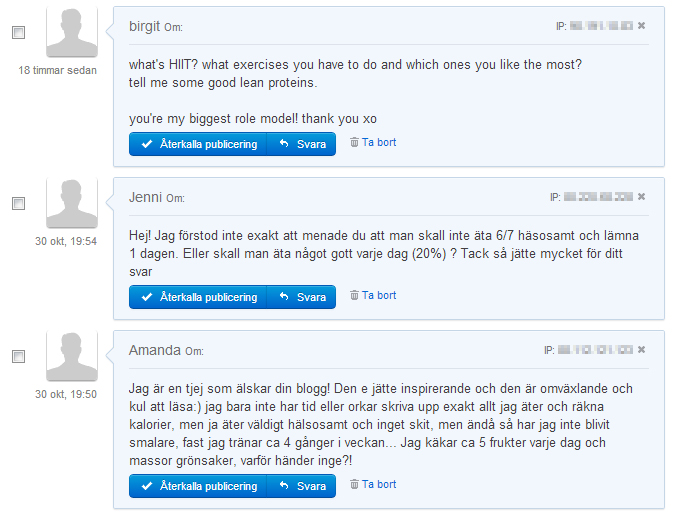





 Så kul, låter som en superbra idé tycker jag! Jag vet inte hur jag ska formulera det här utan att låta bitchig, men jag har lagt ner väldigt mycket tid på designen och jag tycker att jag har lyckats göra den relativt personlig, så det skulle vara tråkigt om någon annan hade en liknande, eller likadan. Hoppas du har förståelse. Kram!
Så kul, låter som en superbra idé tycker jag! Jag vet inte hur jag ska formulera det här utan att låta bitchig, men jag har lagt ner väldigt mycket tid på designen och jag tycker att jag har lyckats göra den relativt personlig, så det skulle vara tråkigt om någon annan hade en liknande, eller likadan. Hoppas du har förståelse. Kram! 
 Y U NO LIKE ME??? Nej, men jag läser faktiskt inga bloggar så jag vet inte, tyvärr
Y U NO LIKE ME??? Nej, men jag läser faktiskt inga bloggar så jag vet inte, tyvärr 


Grilled Chicken Bruschetta
 time: 22:29:00
time: 22:29:00 
 3 medium vine ripe tomatoes
3 medium vine ripe tomatoes 2 small cloves garlic, minced
2 small cloves garlic, minced ½ dl (1/4 cup) chopped red onion
½ dl (1/4 cup) chopped red onion 2 tbsp fresh basil leaves, chopped
2 tbsp fresh basil leaves, chopped 1 tbsp extra virgin olive oil
1 tbsp extra virgin olive oil 1 tbsp balsamic vinegar
1 tbsp balsamic vinegar salt and fresh cracked pepper to taste
salt and fresh cracked pepper to taste 85 g (3oz) part skim mozzarella, diced
85 g (3oz) part skim mozzarella, diced ½ kg (1.25 lbs) chicken cutlets
½ kg (1.25 lbs) chicken cutlets Fat: 8.5 g
Fat: 8.5 g  Protein: 32.4 g
Protein: 32.4 g  Carb: 6.8 g
Carb: 6.8 g  Fiber: 1.3 g
Fiber: 1.3 g  Sugar: 0.5 g
Sugar: 0.5 g  Sodium: 182.9 mg (without the salt)
Sodium: 182.9 mg (without the salt)“Aim for success, not perfection. Never give up your right to be wrong, because then you will lose the ability to learn new things and move forward with your life.”
 time: 13:38:00
time: 13:38:00 
Goals for November
 time: 10:05:25
time: 10:05:25 





